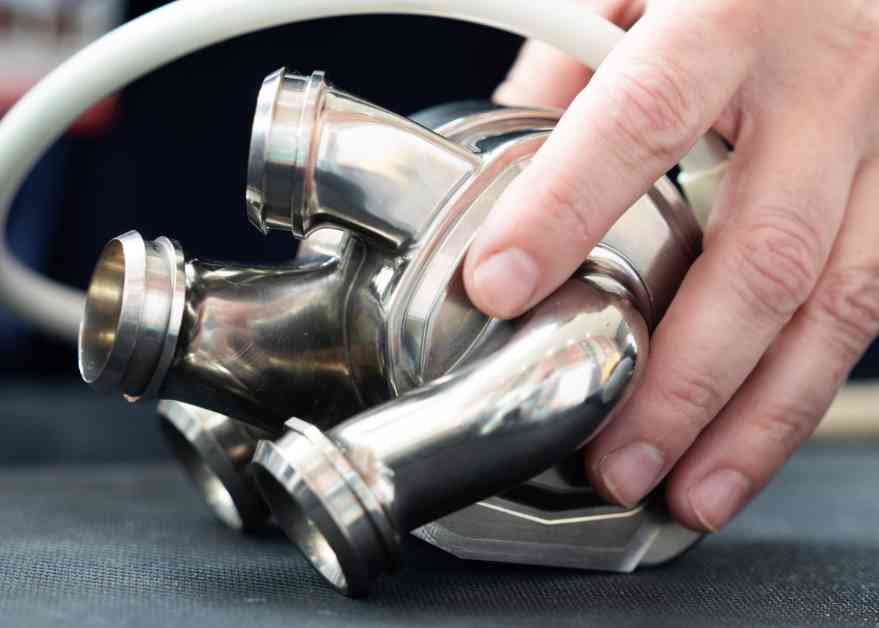In a groundbreaking medical feat, an Australian man in his forties has made history by becoming the first person in the world to be discharged from the hospital with a titanium heart. This innovative device, known as BiVACOR, serves as a temporary solution for individuals suffering from heart failure while they await a donor heart. The man lived with this artificial heart for over three months before undergoing a successful surgery to receive a donated human heart, marking a significant milestone in the field of cardiac surgery.
Revolutionizing Heart Transplantation
The BiVACOR, a total heart replacement made entirely of titanium, represents a remarkable advancement in medical technology. Unlike previous recipients who had to remain hospitalized while using this artificial heart, this Australian man was able to leave the hospital and continue his journey to recovery in a more familiar setting. The successful integration of the device into his life for an extended period showcases the potential of BiVACOR as a viable option for individuals awaiting heart transplants.
Julian Smith, a cardiac surgeon at the Victorian Heart Institute at Monash University, describes this achievement as a significant development in the field of cardiology. The use of titanium hearts as a bridge to transplantation offers hope to patients with heart failure, revolutionizing the way we approach heart transplantation. The ability of the BiVACOR to sustain the man’s life for an extended period underscores its promising future as a temporary solution for individuals in critical need of a new heart.
Challenges and Future Prospects
While the success of the BiVACOR device is a cause for celebration, there are still many unanswered questions and challenges that need to be addressed. Sarah Aitken, a vascular surgeon at the University of Sydney, highlights the need for further research to determine the long-term functionality and cost-effectiveness of the device. The high-risk nature of the surgery and the substantial financial investment required make this innovation a complex but promising avenue for future exploration.
Joseph Rogers, a heart-failure cardiologist and president of the Texas Heart Institute, emphasizes the importance of real-world data in understanding how patients adapt to living with the BiVACOR device. The experiences of individuals like the Australian man provide valuable insights that can inform future advancements in artificial heart technology. The potential for the BiVACOR to serve as a permanent solution for individuals who are not eligible for traditional heart transplants opens up new possibilities in addressing the growing demand for donor organs.
Suspended rotor technology lies at the heart of the BiVACOR device, offering a continuous pumping mechanism that propels blood throughout the body. Unlike traditional mechanical heart devices, the BiVACOR features a magnetically suspended rotor with only one moving part, reducing the risk of mechanical wear and potential failures. The device’s innovative design and functionality make it a promising contender in the field of cardiac surgery.
The future of the BiVACOR device holds great promise, with ongoing trials and improvements aimed at enhancing its reliability and effectiveness. William Cohn, a heart surgeon at the Texas Heart Institute and chief medical officer at BiVACOR, highlights the team’s commitment to refining the device to minimize the risk of failure and enhance patient outcomes. The approval of additional trials by the US Food and Drug Administration signals a positive step towards making this technology more accessible to those in need.
As we witness the evolution of artificial heart technology and its impact on patient care, the journey of the Australian man with the titanium heart serves as a beacon of hope for individuals facing heart failure. His resilience and determination to overcome the challenges of living with an artificial heart inspire us to continue pushing the boundaries of medical innovation. With each milestone achieved, we move closer to a future where life-saving treatments like the BiVACOR device become a reality for all in need.










